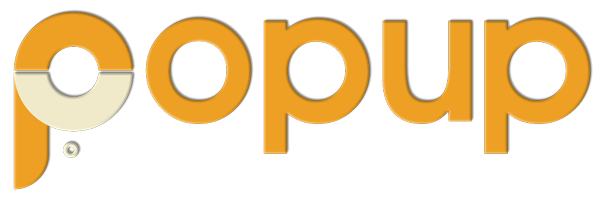Software Development
our company involve the creation, maintenance, and enhancement of applications, frameworks, or other software components to meet the specific needs of users or businesses. It includes several processes, tools, methodologies, and services that guide the entire lifecycle of software products.

Here’s a comprehensive list of services and aspects related to software development:
- Custom Software Development
- Web Application Development
- Software Integration
- Cloud Application Development
- Software Testing and Quality Assurance (QA)
- Agile and DevOps Development
- Mobile App Development
- Software Maintenance and Support
- Database Development and Management
- Artificial Intelligence and Machine Learning Development
- User Experience (UX) and User Interface (UI) Design
- Open-Source Software Development
- Embedded Software Development
- Software Prototyping
- Software Consulting
1. Custom Software Development
- Bespoke Software Solutions: Tailor-made applications built specifically to address the unique needs of a business or organization.
- Enterprise Software Development: Designing large-scale software systems that integrate multiple processes, such as ERP, CRM, and HRM, across the organization.
- Mobile App Development: Creating native or cross-platform mobile applications for iOS and Android devices.
- Desktop Application Development: Building software that runs natively on operating systems like Windows, macOS, and Linux.
2. Web Application Development
- Front-End Development: Developing the client-side of applications, which includes the user interface (UI) and experience (UX), using technologies like HTML, CSS, and JavaScript.
- Back-End Development: Developing server-side components, including databases, APIs, and server logic, using programming languages such as Python, PHP, Ruby, or Java.
- Full-Stack Development: Combining both front-end and back-end development to create a complete web application.
- Progressive Web Apps (PWA): Developing web applications that provide native app-like features such as offline support, push notifications, and fast load times.
3. Software Integration
- API Development and Integration: Building and integrating application programming interfaces (APIs) to allow different software systems to communicate and share data.
- System Integration Services: Connecting disparate software systems and platforms within an organization to ensure seamless data flow and functionality.
- Third-Party Software Integration: Integrating existing third-party tools, such as payment gateways, analytics platforms, or CRM systems, into a custom application.
4. Cloud Application Development
- SaaS (Software as a Service): Developing cloud-based software applications that users can access over the internet without needing to install or maintain them locally.
- PaaS (Platform as a Service): Building platforms that allow developers to create, run, and manage applications without managing the underlying infrastructure.
- Cloud-Native Development: Developing software that takes full advantage of cloud architecture, such as microservices, serverless computing, and containerization.
- Multi-Tenant Applications: Creating software that serves multiple users or organizations (tenants) while maintaining data separation and customization for each.
5. Software Testing and Quality Assurance (QA)
- Manual Testing: Conducting thorough testing by human testers to ensure that the software behaves as expected and catches bugs or issues.
- Automated Testing: Using automated testing tools to perform repetitive tests, such as regression tests, unit tests, and load tests, for more efficient quality checks.
- Performance Testing: Evaluating how a software application performs under various conditions, including high traffic, to ensure scalability and stability.
- Security Testing: Identifying vulnerabilities within the software to ensure data protection, privacy, and compliance with security standards.
6. Agile and DevOps Development
- Agile Development: Following agile methodologies, such as Scrum or Kanban, to create software in iterative, incremental stages, allowing flexibility and ongoing feedback.
- DevOps Services: Integrating development and operations teams to automate, streamline, and improve collaboration throughout the software development lifecycle (CI/CD pipelines).
- Continuous Integration (CI): Automatically integrating code changes from multiple developers into a shared repository to detect and address issues early.
- Continuous Delivery (CD): Ensuring that code can be deployed to production at any time with minimal manual intervention, enhancing deployment speed and reliability.
7. Mobile App Development
- Native App Development: Building apps that are specifically designed for a single platform (iOS or Android), providing optimized performance and access to platform-specific features.
- Cross-Platform App Development: Using frameworks such as Flutter or React Native to create applications that run on multiple platforms from a single codebase.
- Mobile Game Development: Creating interactive and engaging games for mobile devices using game engines like Unity or Unreal Engine.
- App Store Deployment and Maintenance: Publishing apps on app stores (e.g., Apple App Store, Google Play) and providing updates and support post-launch.
8. Software Maintenance and Support
- Bug Fixing: Identifying and resolving bugs and issues reported by users or discovered through testing.
- Software Upgrades and Enhancements: Adding new features, improving functionality, or upgrading the software to meet changing business needs or user demands.
- Technical Support: Providing ongoing support to users, addressing their queries, and troubleshooting issues to ensure smooth software operation.
- Legacy System Modernization: Upgrading outdated or obsolete software systems to modern technologies, improving performance, security, and usability.
9. Database Development and Management
- Database Design and Development: Creating structured databases that support software applications, including relational databases (SQL) and NoSQL databases (MongoDB, Cassandra).
- Database Optimization: Improving the performance of database queries and operations to ensure efficient data handling and retrieval.
- Data Migration Services: Transferring data from legacy systems or databases to new platforms or technologies with minimal disruption to operations.
- Big Data Solutions: Developing software that handles and processes large volumes of data efficiently, using technologies such as Hadoop, Spark, or AWS Big Data services.
10. Artificial Intelligence and Machine Learning Development
- AI-Powered Software: Integrating artificial intelligence (AI) capabilities into software to provide automation, data analysis, and intelligent decision-making.
- Machine Learning Models: Building and training machine learning models that can learn from data and improve over time to deliver predictive analytics, recommendations, or automation.
- Natural Language Processing (NLP): Developing applications that can understand and interact with human language, such as chatbots, voice assistants, or text analytics.
- Computer Vision: Implementing software solutions that can process and interpret visual data, such as image recognition, facial recognition, or video analysis.
11. User Experience (UX) and User Interface (UI) Design
- UI/UX Design: Creating intuitive and visually appealing user interfaces that offer a seamless experience to users.
- Wireframing and Prototyping: Develop wireframes and interactive prototypes to visualize and test the application’s design before development.
- User Research and Testing: Conducting user interviews, usability tests, and other research methods to understand user behavior and improve design decisions.
12. Open-Source Software Development
- Open-Source Projects: Contributing to or building software based on open-source technologies, enabling collaboration and cost-effective development.
- Customization of Open-Source Platforms: Modifying open-source software (e.g., WordPress, Magento, Joomla) to suit specific business needs while leveraging the community-driven ecosystem.
13. Embedded Software Development
- Embedded Systems: Developing software for hardware devices with specific functions, such as IoT devices, automotive systems, and industrial machinery.
- Real-Time Operating Systems (RTOS): Building systems that require real-time performance and deterministic responses, such as robotics, medical devices, or aerospace systems.
- Firmware Development: Programming low-level software that directly controls the hardware functions of embedded devices.
14. Software Prototyping
- Rapid Prototyping: Quickly create a working model of the software to demonstrate concepts, test features, and gather feedback before full-scale development.
- Proof of Concept (PoC): Developing a simplified version of a software solution to test its feasibility or potential market acceptance.
15. Software Consulting
- Software Development Consulting: Offering expert advice on technology stacks, architecture, development practices, and scaling strategies for software projects.
- Feasibility Studies: Assessing the technical and financial viability of a software project before committing to full development.
Our software development services range from early concept and design to development, testing, deployment, and continuous maintenance. Businesses can create customized solutions that foster innovation, efficiency, and growth by employing the appropriate methodology, tools, and development processes.
